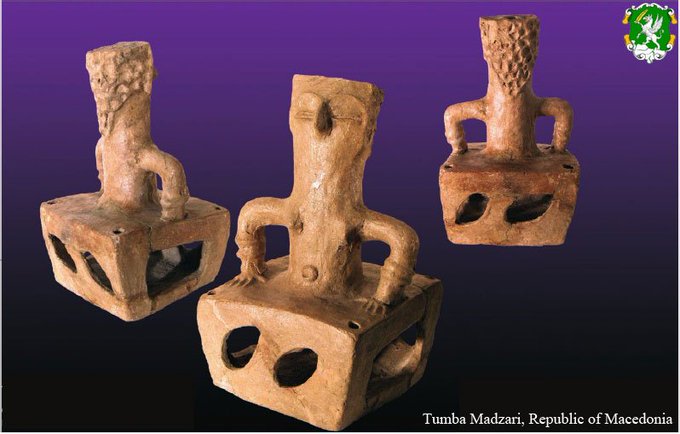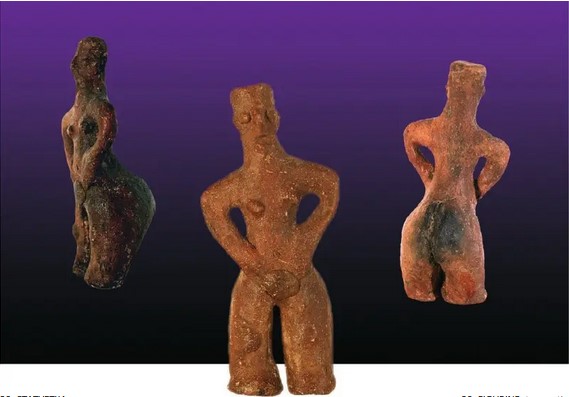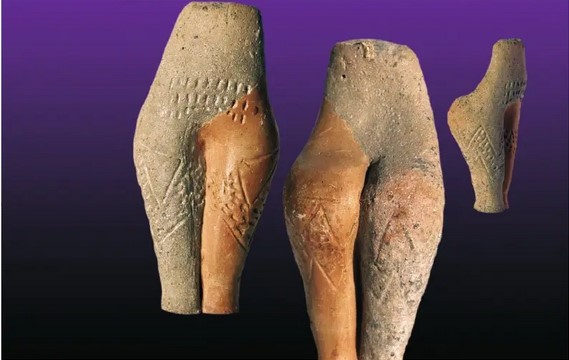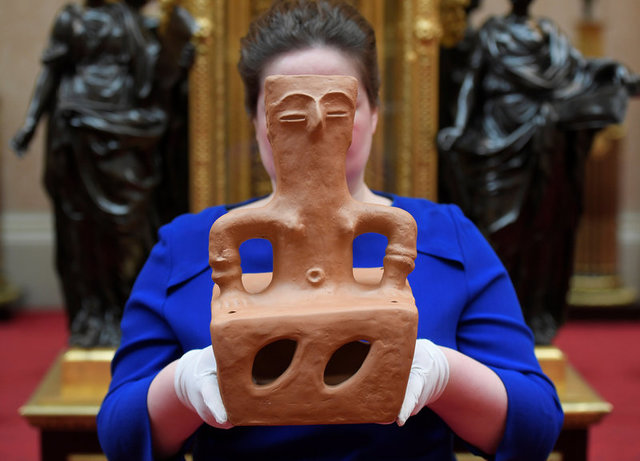The Great Mother, or Magna Mater, is one of the most notable and representative artifacts found in Macedonia. Thus far, there have been as many as 38 different figurines found in every region of the country, with the largest number discovered in Pelagonia.
Its oldest examples date from as early as 8,000 years ago, or the early Stone Age – a period in human civilization when the woman was worshiped for her divine role in life.
According to ancient beliefs, the woman was seen as one and the same as the earth. This was a noble consideration because both the earth and the woman are blessed with fertility – they provided security, food and life.
It is no coincidence that Macedonia was one of the best lands for the evolution of settled life and agriculture which has enabled the flourishing of the Great Mother cult.
Thanks to its lakes, the three grand rivers – Vardar, Erigon (Crna Reka) and Struma and their many and potent tributaries, Macedonia became attractive to the earliest agriculturalists who settled near them and along their banks.
Two of the most famous representations of the Great Mother Goddess figurines are found in the fertile valley of Skopje, in the regions of Crna Reka, lake Ohrid, Vardar and so on.

Although many representations of the mother figure have been found in Europe and Anatolia, those found in Macedonia are unique because the mother figure has been molded on top of a cube, which represents the home.
One of the Great Mother figures was discovered in the location Tumba Madzari in Skopje and dates from the 6 millennium before the present age. The second remarkable figurine was found in Anzabegovo-Vrshnik, also near Skopje.
As a rule, Magna Mater figurines are discovered inside the perimeter of the home where they used to occupy a notable location and were usually displayed raised on a pedestal.
The cube element underneath the figurine of a woman has several interpretations. Most importantly, it represents the home. The hollow place inside the cube was used to light incense, dried herbs and other offerings to symbolize the warmth of the home and of the mother figure.
Thirdly, fire also represented life, and seen as such, people related the burning of fire with the growth of a baby inside the uterus or the mother’s womb. And lastly, people in the Stone Age made offerings of grain to the gods, so grain was offered to her as well.

Creating the Great Mother Goddess figurines required both artistic and technical skill.
Although the figurines don’t show a highly-developed aesthetic, they grasp sufficiently the essential attributes of the woman, such as breasts, hair and body. The figurine from Tumba-Madzari has braids on the back of the head.
In making the final product, clay had to be spun, pressed, and infused with the right amount of water. Afterwards, it was shaped in the desired model.
In order to get a durable good, the clay had to be baked. For this to work, the craftsmen and craftswomen had to create temperatures between 900 and 1000 degrees Celsius.

This is a considerable amount of heat that isn’t easily reached. People back then had to use special kind of ovens with a specific type of wood that can maintain such temperature, but they also used bellows to add air and inflame the head to a higher degree.
Thanks to the remarkable skill of the people living in Macedonia during the Stone Age, and also thanks to conditions inside the soil at archaeological locations, today we have some of the finest specimens of the Great Mother Goddess figurine in the world.
Both of the figurines that we mentioned in the text are on display in the Archaeological Museum of Macedonia in Skopje and their replicas are best sellers in souvenir shops around the country.




